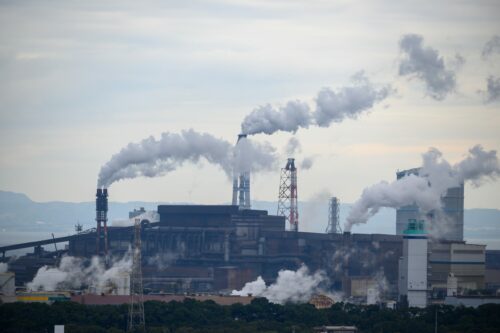Since the earliest days of industrialization, the US has implemented and maintained systemic inequalities that negatively impact people of color. Environmental racism has its roots in interwar community planning and decades of discriminatory housing and workplace regulation that has caused serious, irreparable, generational harm to millions of Americans.
What is Environmental Racism?
Environmental racism refers to the purposeful location of industrial, manufacturing, and dumping sites near communities of color. Examples of environmental racism are well documented in many parts of the country and tend to position factories, dumps, or refineries near Black, Latino, Indigenous Peoples, or neighborhoods with migrant workers.
Since the 1960s, research has shown environmental racism exposes minority communities to dangerous chemicals, fumes, and other pollutants at shockingly disproportionate levels compared to the general population and even adjacent neighborhoods. Headline examples of environmental racism include the Flint Water Crisis, sewage contamination in Illinois, and repeated instances of gas and oil projects infringing on tribal reservation rights and protections.
Louisiana’s Cancer Alley
One of the most cited and outrageous examples of environmental racism is known as “Cancer Alley.” St. James Parish in Louisiana is home to a dozen operating petrochemical plants, which produce everything from plastics to input materials for fertilizers. These facilities have been around for decades, with devastating consequences for residents.
Seven parishes in Louisiana, including St. James, are home to a quarter of all US petrochemical production, which includes refineries, processing plants, pipelines, and additional oil and gas facilities. Chemical exposure is off the charts and has contributed to disproportionately high risk. Seven of the nation’s ten census zones by cancer risks are in Cancer Alley. One city, Reserve, has the nation’s highest cancer risk at fifty times the US average.
The residents of St. James aren’t alone. Cases of environmental racism are documented across the country, from sugar can smoke in Pahokee, Florida, to polycarbonate biphenyls dumps in Cheraw, South Carolina.
Related: Do Volatile Organic Compounds Cause Cancer?
Fixing the Problem
Environmental justice organizations have worked for decades to protect underserved, at-risk communities, but it’s extremely challenging. Segregated communities, still prevalent in many cities, are the product of generational discriminatory housing practices like redlining. As a result, industries are more likely to stay or move to areas with lower property values, exacerbated by existing industrial facilities in those locations.
Communities of color have resorted to expensive lawsuits to keep corporations out of their backyards. In 2018, General Iron was pushed to move from its Lincoln Park property to make room for a new real estate development. It would also benefit Lincoln Park residents, a mostly white, high-income part of the great Chicago metropolitan area.
Officials paved the way for a move to Chicago’s Southeast side, considered low-income and primarily Latino. Residents had almost no say in the decision-making process until, in 2020, the community filed a civil rights complaint with the US Department of Housing and Urban Development. Two years later, HUD agreed with residents and eventually helped negotiate a settlement.
Environmental Equality Is a Health Issue
The US has a long and often ugly history of discrimination and racial inequality, which is bad enough. Too few legislators and families understand how much this impacts the health of millions of Americans today and over generations of high-risk exposure. None of this is an easy fix, but we owe it to underserved and marginalized populations to correct past mistakes, make financial investments to improve the situation, and include proactive, no-cost medical care to alleviate suffering. We can do this, and you can help. Consider donating to Less Cancer and make a difference.


Leave A Comment
You must be logged in to post a comment.